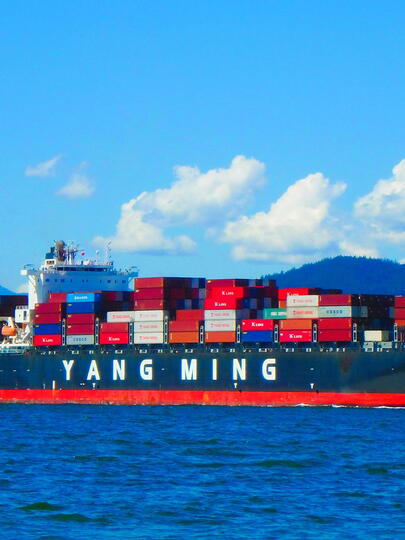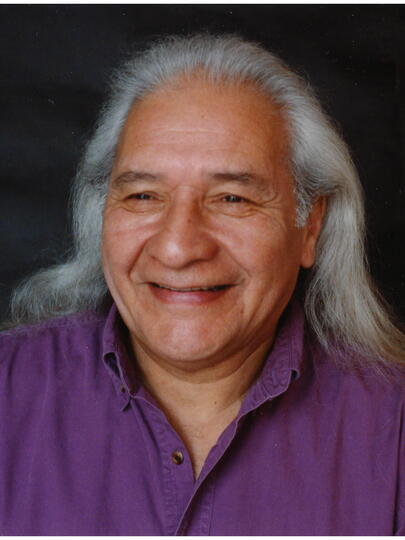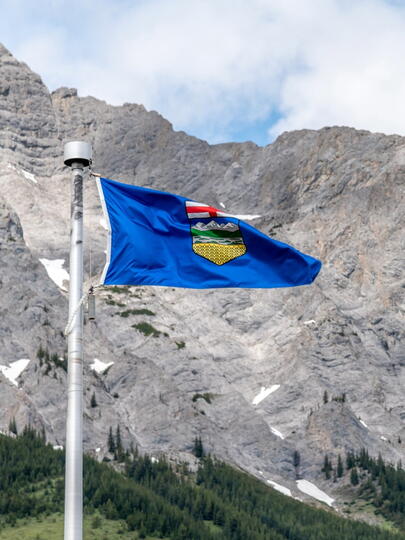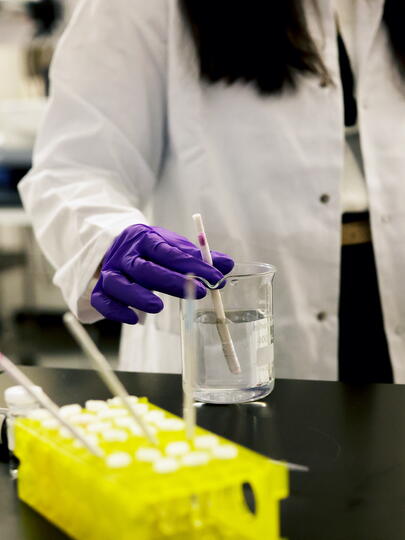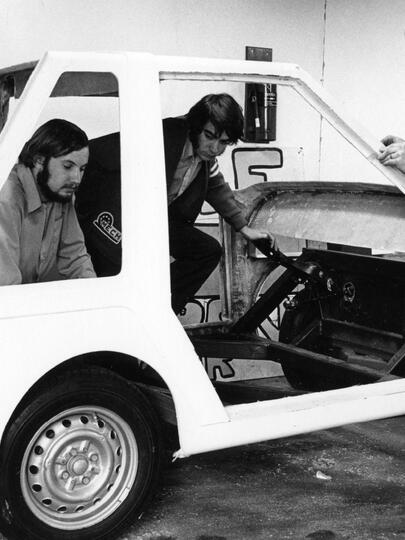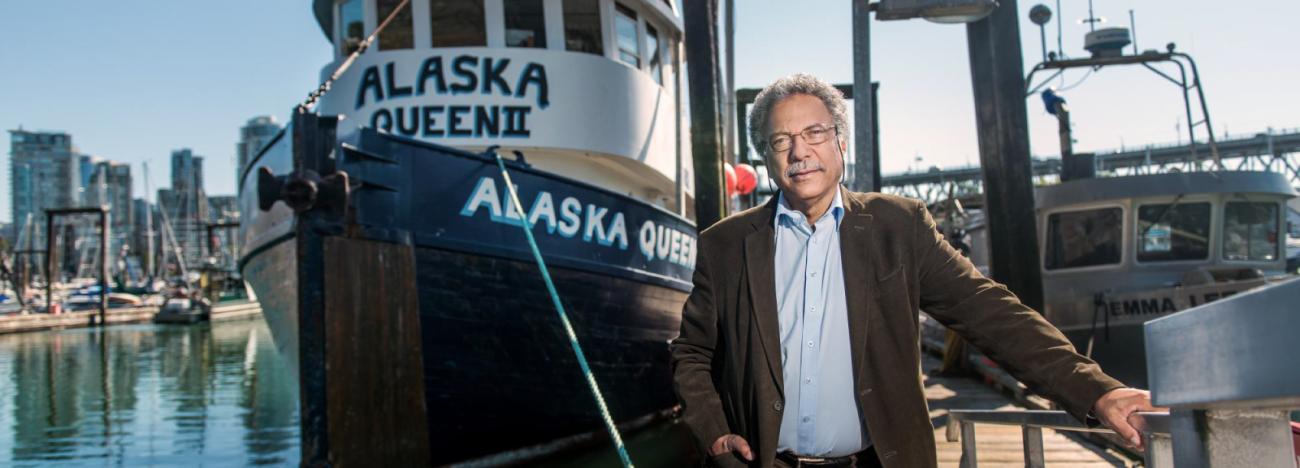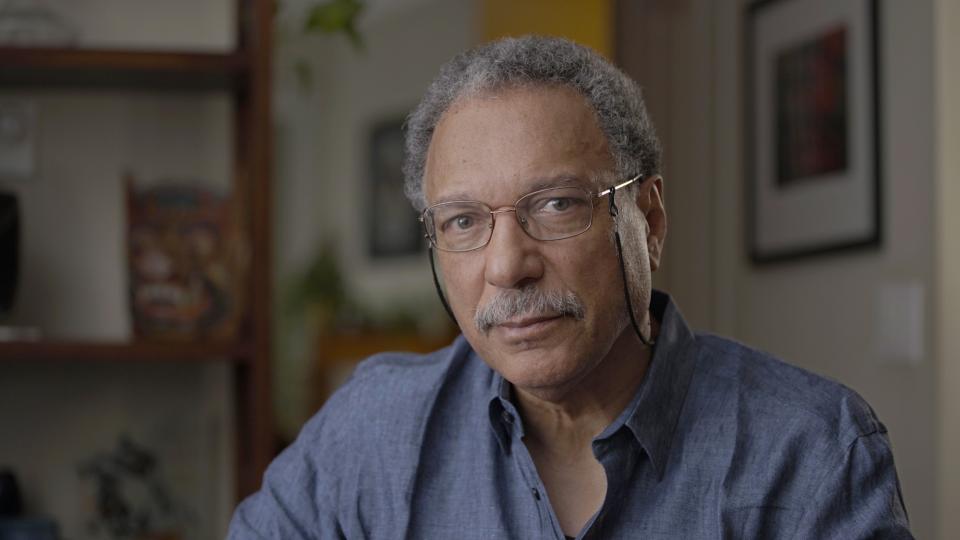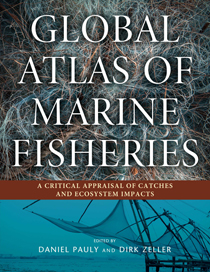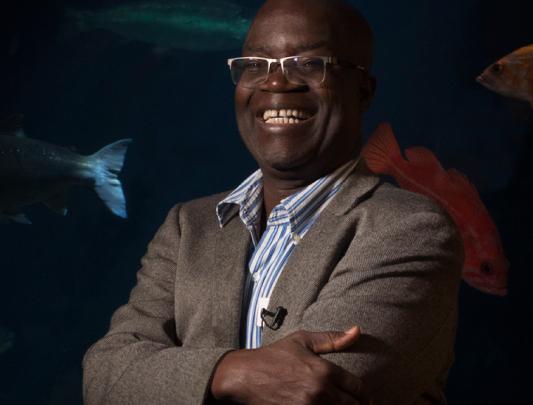No Fish Story
The next time you dig into a plate of fish and chips, or produce a lovely baked salmon for your dinner party or toss a few shrimp on the barbie, give a thought to the world’s fisheries. Largely unregulated, most are experiencing annual declines in catch, many have already suffered serious habitat damage and some have disappeared entirely. International regulatory organizations are unable, and in some cases unwilling, to listen to the chirpings of the canary in the fisheries coal mine, though the voices calling for change keep getting louder.
One of the loudest voices is UBC’s Daniel Pauly, and he has a reputation for being somewhat forceful about his work. He has been known to get up in the grills of UN, government and industry officials to get them to read and, even better, accept the research he and his colleagues have generated showing that the world’s fisheries are in a precarious state. That some seem to be listening may mean his tactics are beginning to work.
Pauly earned his doctorate in fisheries biology in Germany at the University of Kiel and, after travelling and researching extensively in the tropics, landed at UBC in 1994. In 2003 he was appointed director of the Fisheries Centre, and the same year was named one of the 50 most influential scientists in the world by Scientific American. He and his team have done extensive work to determine the state of coastal fisheries around the world and established FishBase, a global database of fish stocks documenting the status of more than 30,000 fish species. He has received many awards and honours over the years, most recently the Albert Ier Grand Medal in Science from the Albert I of Monaco Foundation, at the Institut océanographique in Paris.
Pauly has been an ongoing critic of world fisheries and of the UN agency responsible for monitoring catches, the Food and Agriculture Organization (FAO). He thinks the agency underestimates catches by as much as 50 per cent. A recent report by the FAO, for instance, estimates the annual catch at 77 million metric tonnes. Pauly and Sea Around Us, the research project he leads at UBC’s Institute for Oceans and Fisheries, say a more realistic number is 110 million metric tonnes.
Why the discrepancy? Over the years, Pauly’s group has developed methods to gather estimates from a much broader range of sources, including statistics from industrial fishers, local fishery experts and law enforcement officials from various countries that document illegal fishing. The group has data that includes artisanal fisheries, subsistence fisheries, sport fisheries and estimates of discarded bycatch – off-species fish caught and thrown away, part of a “fish the best and leave the rest” philosophy – which, Pauly says, the FAO refuses to acknowledge, and which accounts for the 50 per cent missing from FAO data. (See sidebar for a description of these various fisheries.)
A recent report by the FAO estimates the annual catch at 77 million metric tonnes. Pauly and the Sea Around Us research project say a more realistic number is 110 million metric tonnes.
That data led to the production of the Global Atlas of Marine Fisheries, a 520-page book produced by Sea Around Us and published in October 2016. It details the status of fisheries world-wide, and provides recommendations for how nations can rebuild their fish stocks. The atlas shows how fish catches peaked in the mid 1990s and have declined markedly ever since. It makes fascinating reading and gives a detailed description of each country’s fishery, its limitations, its strengths and its pathway to recovery.
The FAO, says Pauly, depends on data officially reported by legal industrial fishers who harvest in the Exclusive Economic Zones (EEZ) of coastal nations world wide. Because the FAO does not include the data generated by Sea Around Us, many areas thought to be stable in terms of available fish stocks are in danger of being seriously overfished. Additionally, efforts to rebuild fish habitats may be postponed or stopped entirely due to inaccurate estimates of the health of local fisheries.
Another inadequacy of the FAO reporting system, according to Pauly, is its failure to recognize fisheries that have no industrial component. The FAO reports that Canada’s Arctic, for instance, has no fishery. Yet, notes Pauly, local Inuit and other local fishers are quite active in the Arctic. This oversight by FAO is typical of how that organization counts catch totals around the world.
But it’s the large industrial concerns that worry Pauly the most. His research shows that they are causing the most profound destruction of world fisheries. “Climate change and pollution will continue to be factors affecting fish populations, but industrial fishing often destroys habitat, making it difficult for stocks to recover,” he says. “Trawling, for example, which gathers fish in large nets that are dragged along the ocean floor, takes large amounts of fish and, at the same time, destroys bottom habitat.”
Intense industrial fishing isn’t likely to go away. “It’s easier for regulatory bodies to manage a few large fishing concerns,” he says. It’s also likely that such a large industry has the ear of governments. Pauly notes that Fisheries and Oceans Canada policy specifically states a clear preference for large corporate fisheries and actively discourages small independent ones. While economies of scale might favour large-scale fishing, it’s unusual that government policy should eliminate the smaller players. “It’s as if government were to pass laws banning mom and pop stores in favour of Walmart and Costco,” he says. Of course, it’s the same in many industries: market forces encourage a few large corporations to dominate agriculture, energy, forestry, resource extraction and so on, and the Canadian government isn’t immune to influence from lobby groups. But doing so in fisheries, Pauly argues, makes proper management of the resource more difficult and encourages illegal fishing on both the large and small scale.
Many areas thought to be stable in terms of available fish stocks are in danger of being seriously overfished.
Pauly and his colleagues have developed guidelines for helping to establish sustainable fisheries. Of primary importance is getting fishing countries to report how much of the resource is being harvested – from all sources, not just industrial fishing – and convincing the FAO to include those sources in its own estimates. Of equal importance is convincing governments to pass laws that demand habitat preservation, encourage the repair and recovery of damaged habitat by establishing unfished marine reserves, and establish protocols to limit harvesting of endangered populations.


